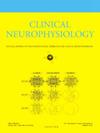机器学习对癫痫脑磁图独立成分的分类。
IF 3.6
3区 医学
Q1 CLINICAL NEUROLOGY
引用次数: 0
摘要
目的:脑磁图(MEG)为耐药局灶性癫痫患者的术前评估提供了有价值的信息,但分析耗时且主观。我们的目标是结合独立成分分析(ICA)和机器学习来简化脑磁图信号的解释。方法:对41例患者进行分析。机器学习模型被训练成基于61个预定义特征集对独立组件进行分类。在第一个模型中,基于随机森林(RF),我们将工件组件与所有其他组件进行分类。在第二个模型中,基于RF和逻辑回归,我们将4类(心脏、噪音、癫痫、生理(即正常的大脑活动))分类。结果:使用第一个模型1,我们获得了f1分,平衡精度在0.9以上。第二种模型的平衡精度在0.8以上。癫痫成分的分类高于偶然水平,但有中等F1评分约0.5 -在患者之间有很大的差异。我们的分析强调了基于频谱、双极性、连通性、峰度、规律性以及尖峰检测困难的特征。结论:ICA与随机森林相结合可以有效地进行伪迹分类。区分癫痫与生理活动更为困难,尽管一些特征有望作为生物标志物。意义:我们的研究显示了ICA对癫痫和人工成分分类的潜力和技术局限性。本文章由计算机程序翻译,如有差异,请以英文原文为准。
Classification of magnetoencephalographic independent components in epilepsy by machine learning
Objective
Magnetoencephalography (MEG) provides valuable information for the pre-surgical assessment of patients with drug-resistant focal epilepsy, but analysis is time-consuming and subjective. Our objective was to combine Independent Component Analysis (ICA) and machine learning to ease interpretation of MEG signals.
Methods
We recorded 41 patients. Machine learning models were trained to classify independent components based on a set of 61 predefined features. In a first model, based on random forest (RF), we classified artifact components versus all others. In a second model, based on RF and logistic regression, we classified 4 classes (heart, noise, epileptic, physiological (i.e. normal brain activity)).
Results
With the first model 1, we obtained F1-score and balanced accuracy above 0.9. With the second model, balanced accuracy was above 0.8. Classification of epileptic component was above chance level, but with a moderate F1 score around 0.5 – with large variability across patients. Our analysis highlighted features based on spectrum, dipolarity, connectivity, kurtosis, regularity, as well as difficulties regarding spike detection.
Conclusion
Artifact classification can be performed efficiently with a combination of ICA and random forest. Distinguishing epileptic from physiological activity is more difficult, although some features show promise as biomarkers.
Significance
Our study demonstrates both the potential and the technical limitations of ICA classification of epileptic and artifactual components.
求助全文
通过发布文献求助,成功后即可免费获取论文全文。
去求助
来源期刊

Clinical Neurophysiology
医学-临床神经学
CiteScore
8.70
自引率
6.40%
发文量
932
审稿时长
59 days
期刊介绍:
As of January 1999, The journal Electroencephalography and Clinical Neurophysiology, and its two sections Electromyography and Motor Control and Evoked Potentials have amalgamated to become this journal - Clinical Neurophysiology.
Clinical Neurophysiology is the official journal of the International Federation of Clinical Neurophysiology, the Brazilian Society of Clinical Neurophysiology, the Czech Society of Clinical Neurophysiology, the Italian Clinical Neurophysiology Society and the International Society of Intraoperative Neurophysiology.The journal is dedicated to fostering research and disseminating information on all aspects of both normal and abnormal functioning of the nervous system. The key aim of the publication is to disseminate scholarly reports on the pathophysiology underlying diseases of the central and peripheral nervous system of human patients. Clinical trials that use neurophysiological measures to document change are encouraged, as are manuscripts reporting data on integrated neuroimaging of central nervous function including, but not limited to, functional MRI, MEG, EEG, PET and other neuroimaging modalities.
 求助内容:
求助内容: 应助结果提醒方式:
应助结果提醒方式:


